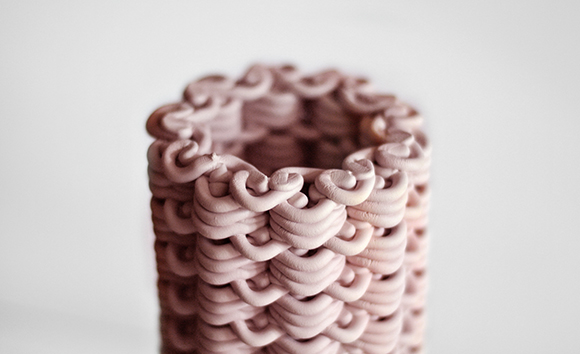Knitting Concrete

Our project explores potential technology transfers between two material practices generally considered to be widely apart: that of knitting and concrete construction. This is made possible by the use of 3D printing in which the shaping of concrete takes place, not through the imposed rigidity of static mould, but along a programmable path performed by a digital machine. This departure from traditional formwork-based techniques represents not only a technological shift, but also an opportunity for re-evaluating norms and conceptions that hitherto have produced concrete as a monolithic and uniform material. To unlock the potential of the additive process, we take inspiration from practice of knitting - a craft with a long tradition in forming a continuous length of filament into complex material structures.
Together with colleagues at Konstfack the project will explore adaptations of knitting techniques for 3D printing concrete. The overall goal of the project is to find out how principles of knitting can provide new means of controlling the density, porosity and surface articulation in the shaping of concrete. This will be achieved by studying various knitted stitches, pattern techniques and ways of applying these patterns to advanced topological shapes through the fabrication of prototypes in clay. The findings will inform the development of a graphic interface in which patterns can be programmed and translated automatically into fabrication instructions for the 3D printing machine.
Team
Helena Westerlind, KTH, helena.westerlind@arch.kth.se .
José Hernández Vargas, KTH
Ulrika Mårtensson, Konstfack
Anneli Renborg, Konstfack
